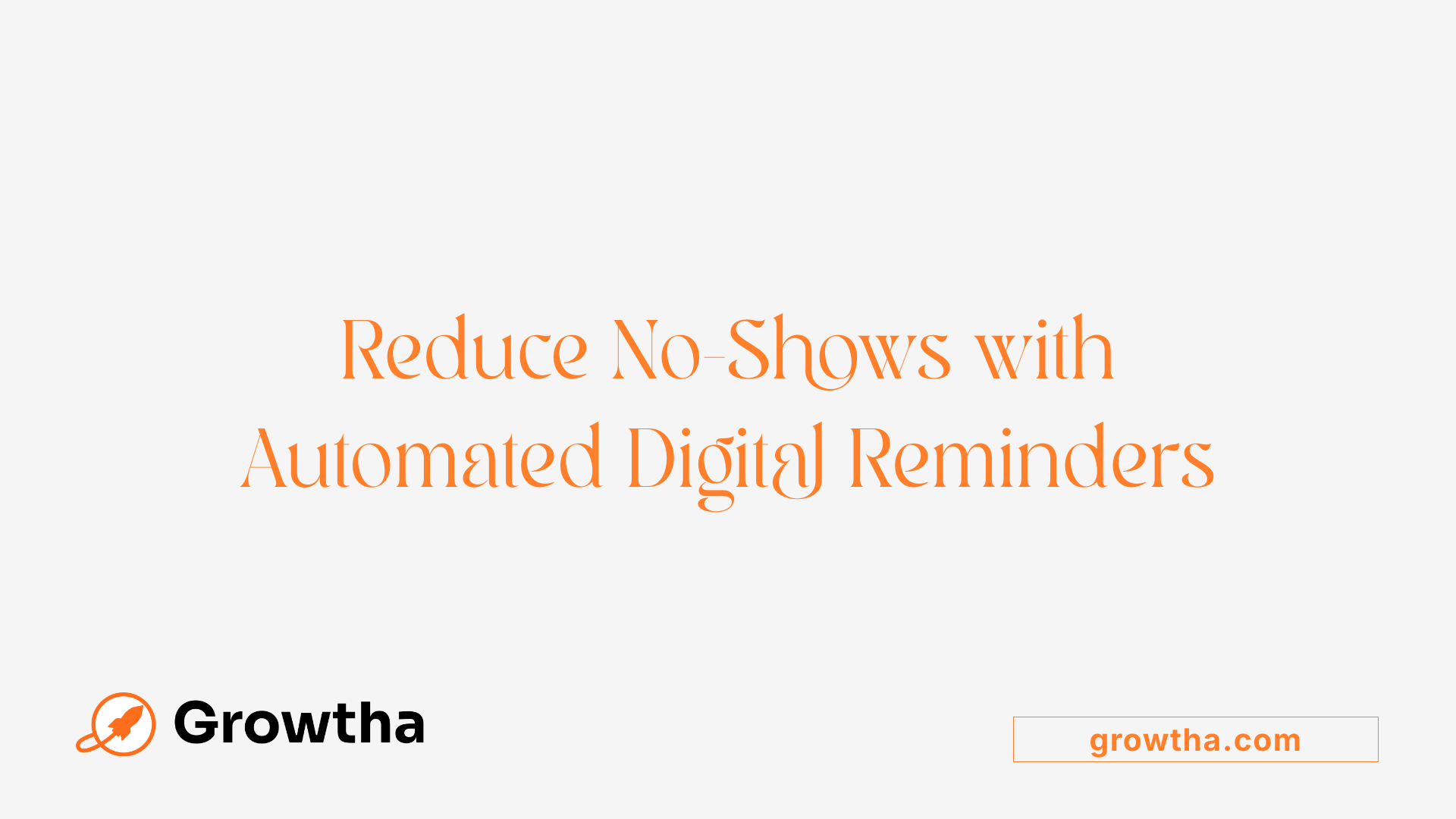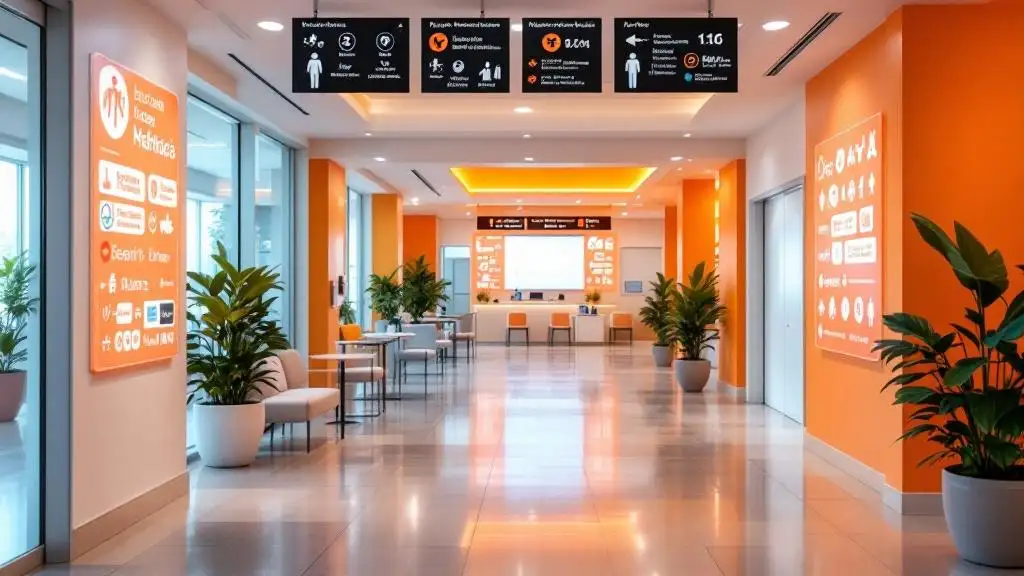How to Optimize Appointment Reminders for Better Attendance
Enhancing Healthcare Engagement Through Effective Appointment Reminders


How to Optimize Appointment Reminders for Better Attendance
The Critical Role of Appointment Reminders in Healthcare
Effective appointment reminder strategies are essential for improving patient attendance, reducing no-shows, and optimizing healthcare practice efficiency. With healthcare systems facing rising no-show rates, leveraging advanced reminder systems can significantly impact patient outcomes and operational productivity.
Strategic Approaches to Improving Appointment Reminder Effectiveness

What are effective strategies to improve appointment reminders for increased patient attendance?
Implementing a combination of automated, multi-channel reminder systems proves highly effective in reducing missed appointments. Using methods like text messages, emails, and automated phone calls, sent at carefully planned times—such as 48 hours and a few hours prior—ensures patients are consistently informed about their upcoming visits.
Personalization makes reminders more engaging. Addressing patients by name, including specific appointment details, and providing clear instructions about what to bring or how to prepare encourages timely attendance. Equally important is offering straightforward rescheduling options, often through secure online portals or automated systems, which simplifies changes and prevents no-shows.
Addressing logistical barriers like transportation difficulties and mobility issues can significantly boost adherence. Incorporating telehealth options, such as video consultations, allows patients to attend appointments virtually, overcoming physical barriers.
Clear communication about policies, including the consequences of no-shows, combined with patient education on the importance of their appointments, fosters responsibility and reinforces commitment.
Utilizing analytics helps identify patients at higher risk of missing appointments. Tailored communication—like personalized reminders or additional follow-up—addresses their specific barriers.
Building strong relationships through consistent, personalized communication enhances patient trust and loyalty, which ultimately improves attendance. The integration of these strategies creates a supportive environment that encourages patients to prioritize their healthcare visits.
| Strategy | Implementation Example | Purpose |
|---|---|---|
| Automated multi-channel alerts | SMS, email, phone calls at set intervals | Maximize reach and reminder effectiveness |
| Personalization | Address patient by name, include specific details | Increase responsiveness and response rates |
| Clear instructions | Directions, parking info, what to bring | Reduce logistical issues and confusion |
| Flexible rescheduling | Online booking, quick reschedule options | Decrease cancellations and no-shows |
| Address social barriers | Telehealth, transportation support | Overcome barriers to attendance |
| Transparent policies | Communicate no-show penalties clearly | Encourage accountability |
| Data-driven targeting | Analytics to identify high-risk patients | Focus efforts on patients needing extra engagement |
For healthcare providers aiming to improve appointment adherence, combining these tactics creates a comprehensive approach that addresses both behavioral and logistical barriers, leading to better health outcomes and optimized clinic operations.
Designing and Implementing an Impactful Appointment Reminder System
What are best practices for designing and implementing an effective appointment reminder system?
Creating a successful appointment reminder system requires a strategic approach that aligns with the goal of reducing missed appointments and promoting patient adherence. First, health practices should clearly define their objectives, such as decreasing no-show rates or enhancing patient engagement.
A multi-channel communication strategy is vital. Utilizing SMS, email, and automated voice calls ensures broader reach and accommodates patient preferences. Personalization is another crucial component. Reminders should include specific appointment details like date, time, location, and provider, along with clear calls to action—such as replying to confirm, reschedule, or seek assistance—that encourage active participation.
Timing of reminders significantly impacts their effectiveness. Sending initial alerts approximately 48 to 72 hours before the appointment provides ample notice. Additional reminders 24 hours and just a few hours prior help reinforce commitment. These messages should be spaced appropriately to avoid overwhelming patients but frequent enough to reduce forgetfulness.
Automation plays a key role in operational efficiency. Integrating reminder systems with existing Electronic Health Records (EHRs) through secure APIs ensures accurate, up-to-date information is communicated. This integration facilitates automatic scheduling updates and rescheduling when needed.
Patient data privacy and compliance with regulations like HIPAA and GDPR are non-negotiable. Systems must obtain explicit patient consent, include clear opt-out options, and limit the inclusion of protected health information within messaging content.
To optimize performance, practices should monitor relevant metrics such as confirmation rates, no-show reductions, rescheduling frequency, and patient satisfaction. Collecting feedback through surveys or direct communication allows continuous system refinement.
Regular testing and updates of the reminder process, based on insights gained from performance data and patient input, are essential to ensure the system remains effective. Implementing these best practices results in lower no-show rates, improved resource utilization, and enhanced patient experience.
Timing and Content: The Pillars of Improved Patient Attendance
 Optimizing the timing and content of appointment reminders is essential for reducing no-shows and enhancing patient engagement. Studies indicate that sending reminders 48 to 72 hours before the scheduled appointment period yields the best results, giving patients enough notice to prepare and confirm their attendance.
Optimizing the timing and content of appointment reminders is essential for reducing no-shows and enhancing patient engagement. Studies indicate that sending reminders 48 to 72 hours before the scheduled appointment period yields the best results, giving patients enough notice to prepare and confirm their attendance.
To reinforce the reminder, supplementary messages sent closer to the appointment date, such as 24 hours beforehand, can further decrease the likelihood of forgetting or last-minute cancellations. This two-step approach ensures that patients remain aware and committed.
The content of these messages plays a crucial role. Clear, personalized messages that include essential appointment details such as date, time, location, and provider information tend to achieve higher response and confirmation rates. Adding a direct call-to-action—like confirming or rescheduling—and including practical information such as directions or transportation options can address logistical concerns.
Utilizing multiple communication channels further increases reach. Text messages boast high open rates, making SMS an effective primary tool, while emails or automated voice calls serve as complements, catering to patient preferences.
Tailoring reminders to individual patient profiles enhances their effectiveness. For example, culturally sensitive language, preferred communication modes, or language options accommodate diverse patient groups. Incorporating patient preferences, obtained through feedback or initial contact, ensures messages are both accessible and engaging.
Practices benefit from ongoing analysis through A/B testing different message styles, timings, and formats. This testing allows healthcare providers to determine which strategies most effectively motivate attendance.
Overall, evidence shows that a thoughtful combination of timely, personalized, and multi-channel reminders can cut missed appointments by up to 40%. By focusing on when and what information is conveyed, healthcare practices not only improve attendance but also foster stronger patient-provider relationships and maximize operational efficiency.
Leveraging Technology and Innovation in Reminder Systems

What technological tools and innovations, including AI, can enhance appointment reminder systems?
In modern healthcare, automation and advanced communication tools are transforming how practices ensure patient attendance. Automated methods like SMS text messages, emails, automated voice calls, and chatbot interactions serve as effective channels to reach diverse patient populations.
AI-driven features further elevate these systems by enabling personalized messaging based on patient preferences and behaviors. For instance, AI algorithms analyze response patterns to determine the optimal timing for sending reminders, usually 24 to 48 hours before appointments, to maximize attendance.
Interactive voice menus and natural language processing allow patients to confirm, reschedule, or cancel appointments effortlessly via automated calls or text interactions. Integration with Electronic Health Records (EHR), Customer Relationship Management (CRM) systems, and digital calendars ensures real-time updates, reducing scheduling errors and improving communication accuracy.
Predictive analytics, powered by AI, identify patients at higher risk of missing their appointments by analyzing historical attendance data combined with social determinants like transportation or financial barriers. This enables targeted outreach through tailored reminders.
Security measures, including encryption and compliance with HIPAA regulations, protect patient information during all digital communications, maintaining trust and confidentiality.
Emerging features such as multilingual support, digital check-ins, virtual waiting rooms, and reward-based gamification motivate patients to attend and engage actively with their healthcare plans. These technological innovations make reminder systems more efficient, patient-friendly, and capable of adapting dynamically to individual needs.
Advantages of Automated and Digital Reminder Solutions in Healthcare
 Automated and digital appointment reminder systems have become essential tools in modern healthcare settings due to their effectiveness in reducing non-attendance rates. Studies show that such solutions can cut no-show occurrences by approximately 30% to 50%, significantly improving clinic efficiency and patient care.
Automated and digital appointment reminder systems have become essential tools in modern healthcare settings due to their effectiveness in reducing non-attendance rates. Studies show that such solutions can cut no-show occurrences by approximately 30% to 50%, significantly improving clinic efficiency and patient care.
One major benefit is the improvement in healthcare workflows and resource management. By decreasing the number of missed appointments, these systems help optimize provider schedules, reduce idle times, and minimize the need for last-minute rescheduling. This leads to better utilization of available slots and improves overall operational flow.
Cost savings are another notable advantage. Digital reminders like SMS or automated calls cost around €0.14 per message, which is substantially lower than manual phone calls costing about €0.90 each. Despite the lower individual cost, the aggregate savings are considerable when applied across large patient populations, especially when factoring in the reduction in staff time spent on manual reminder calls.
Beyond financial benefits, these systems enhance patient engagement and foster greater loyalty and satisfaction. Personalized reminders, delivered through multiple channels—texts, emails, and voice messages—keep patients informed and remind them of their upcoming appointments. This approach is particularly effective among disadvantaged populations, such as Medicaid recipients, who often experience barriers like transportation or limited health literacy.
Operationally, automated reminders streamline the administrative workload. They reduce the need for staff to make manual calls, freeing up valuable time for patient care and other tasks. Additionally, integrating reminder systems with Electronic Health Records (EHR) allows seamless communication, making rescheduling and follow-ups easier and more efficient.
Moreover, these systems help minimize scheduling disruptions and empty slots. By sending reminders within an optimal window, typically 24-48 hours before the appointment, clinics can encourage attendance or facilitate last-minute rescheduling. This balancing act reduces the frequency of cancellations and no-shows, ensuring that clinics run smoothly and resources are fully utilized.
In summary, automated and digital reminder solutions are transforming healthcare appointment management. They improve attendance rates, optimize operations, and contribute to better patient outcomes—all while being cost-effective and adaptable to various patient needs.
Case Studies and Evidence of Success in Reminder Implementation
Are there case studies or success stories demonstrating effective appointment reminder strategies?
Yes, numerous healthcare institutions have documented the positive impacts of appointment reminder systems. Notably, organizations like the Mayo Clinic and Lahey Hospital have reported significant improvements in patient attendance after deploying automated reminder solutions.
For example, the Mayo Clinic’s initiative using automated email and text reminders reduced no-show rates by nearly 50%. Similarly, Lahey Hospital implemented an integrated multi-channel reminder system, which resulted in a 38% decrease in missed appointments.
These success stories are supported by quantitative evidence from various studies, revealing reductions in non-attendance rates generally ranging from 30% to 39%. For instance, a comprehensive review indicates that healthcare practices using reminders experienced a drop from a baseline non-attendance rate of around 23% to approximately 13%, demonstrating the effectiveness of these interventions.
The importance of personalizing reminders—such as including patient names, appointment details, and preferences—is frequently highlighted. Tailored approaches combined with supportive policies like flexible scheduling and clear communication often enhance the benefits.
Embedding reminder systems into routine workflows, supported by well-designed administrative procedures, ensures consistent use across departments. Strategies such as automated follow-up messages post-appointment and combining different notification modes (text, email, calls) help maximize engagement and operational efficiency.
Overall, the evidence underscores that implementing reminder strategies not only increases attendance but also optimizes resource utilization and improves patient care outcomes. The success stories from renowned healthcare providers illustrate that well-planned reminder systems are integral to effective healthcare management.
Evaluating and Optimizing Reminder Strategies for Better Outcomes
How can healthcare providers measure and evaluate the success of their appointment reminder strategies?
Healthcare providers can gauge the effectiveness of their reminder systems by tracking various key performance indicators. The most directly relevant metrics are the no-show rates, which indicate how many patients miss their scheduled appointments despite reminders. Reductions in these rates suggest that reminder strategies are working well.
In addition, monitoring cancellation and rescheduling rates helps understand whether reminders influence patient behavior positively or negatively. For instance, an increase in rescheduling might indicate that reminders encourage patients to communicate changes proactively.
Patient engagement levels are also crucial. Response and confirmation rates for reminders—whether via SMS, email, or phone calls—offer insight into how well patients are interacting with the communication. Higher engagement often correlates with lower no-shows.
Patient satisfaction scores and direct feedback surveys can shed light on whether reminders are perceived as helpful and respectful, or if they cause annoyance. Collecting this feedback enables practices to refine messaging, timing, and delivery channels.
Comparing different reminder methods—manual calls, automated texts, or emails—and their timings (such as one week prior, 48 hours before, or same-day reminders) allows practices to optimize their scheduling. Data analytics can identify which strategies yield the greatest attendance improvements.
By synthesizing quantitative metrics with qualitative responses, healthcare providers can comprehensively evaluate the success of their reminder approaches and identify areas for improvement.
Maximizing the Impact of Appointment Reminders
Optimizing appointment reminder systems through strategic timing, personalized content, multi-channel delivery, and innovative technology integration is essential for reducing no-shows and enhancing patient care. Continuous monitoring, leveraging data analytics, and tailoring approaches to patient preferences empower healthcare providers to achieve better attendance rates, operational efficiency, and improved health outcomes. Embracing emerging trends such as AI-driven reminders and integrated digital solutions will further advance appointment adherence and foster stronger patient-provider relationships.
References
- Use of telephone and SMS reminders to improve attendance at ...
- How Automated Reminders Improve Appointment Attendance in ...
- 7 Proven Strategies to Boost Patient Attendance and Reduce No ...
- Automated Appointment Reminders for Better Patient Attendance
- Strategies to Help Families Improve Appointment Adherence
- Maximizing Appointment Attendance - Top Practices
- Appointment reminder systems are effective but not optimal
- How To Optimize Patient Attendance & Reduce No-Shows in 2022
- Patient Appointment Reminders: Reduce No-Shows and Boost ROI







